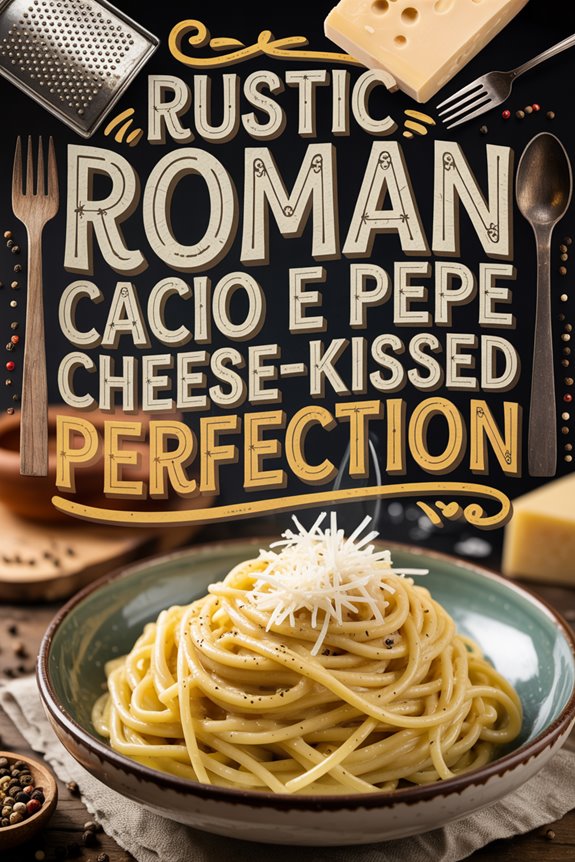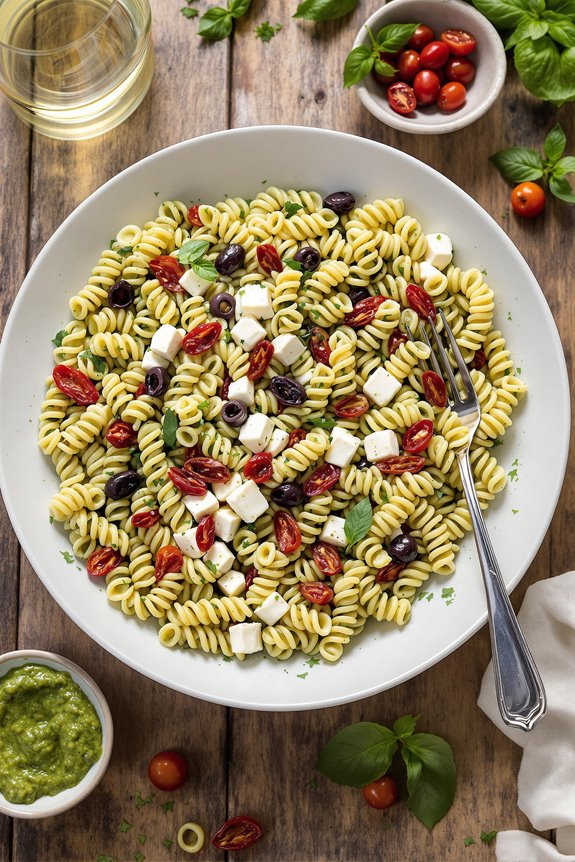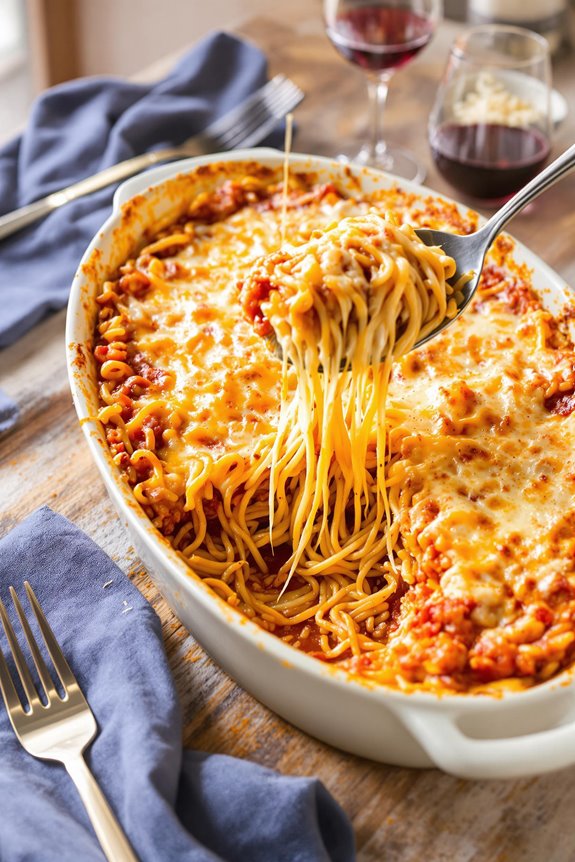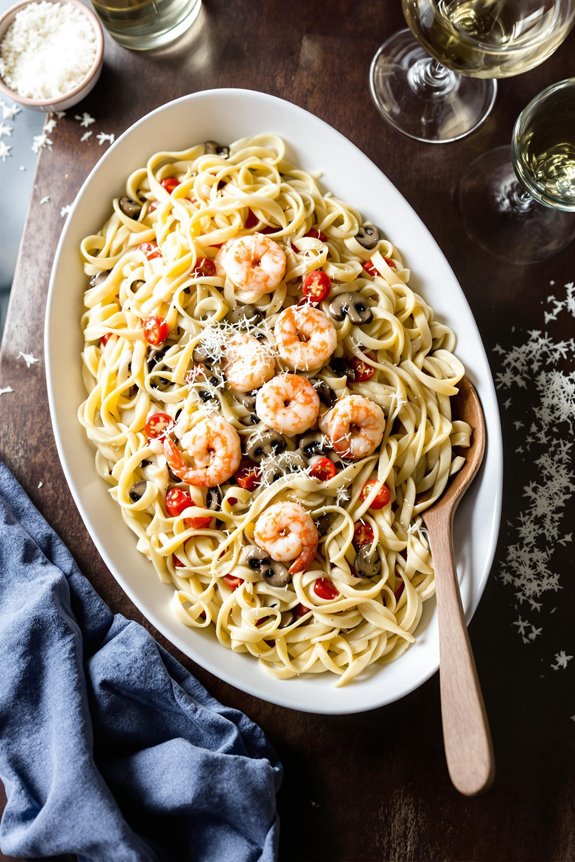Links below are affiliate links. We earn a commission on purchases at no extra cost to you.
Rustic Roman Cacio E Pepe Recipe: Cheese-Kissed Perfection
Authentic Roman Cacio e Pepe transforms simple ingredients into a luxurious pasta that will transport your taste buds straight to Italy.
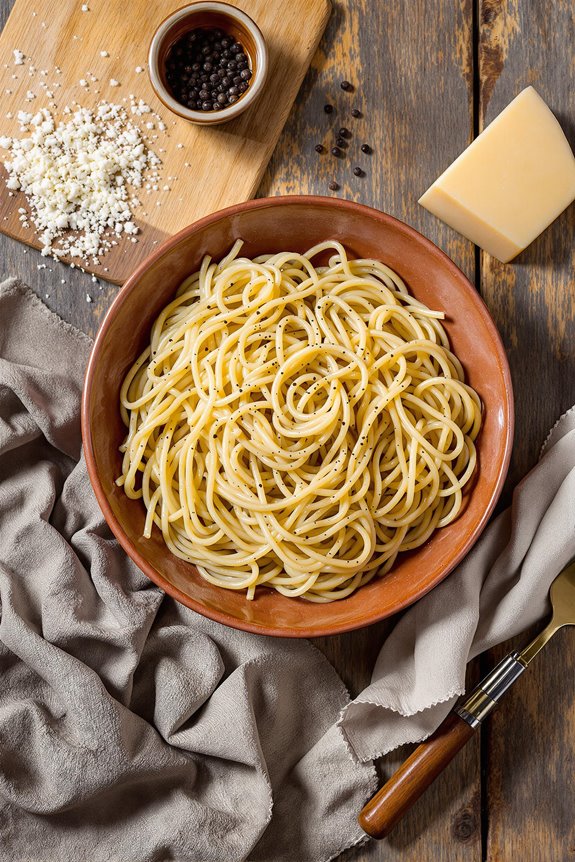
Why You’ll Love this Rustic Roman Cacio e Pepe
If you’re searching for the ultimate comfort food that delivers maximum flavor with minimum ingredients, this rustic Cacio e Pepe is about to become your new obsession.
I’m absolutely smitten with how this dish transforms just four key components—pasta, butter, cheese, and pepper—into something transcendent.
There’s something magical about watching those simple ingredients meld into a silky, pepper-flecked sauce that clings perfectly to each strand of spaghetti.
The sharp tang of pecorino romano, the aromatic heat of freshly cracked black pepper, and that luxurious butter-enriched sauce create a symphony of flavors that feels like a warm hug from an Italian nonna.
What Ingredients are in Rustic Roman Cacio e Pepe?
True to its roots in Roman cuisine, Cacio e Pepe gets its name from its two star ingredients: cheese and pepper. That’s literally what “cacio e pepe” means in Italian! This iconic pasta dish showcases the beauty of simplicity, where a handful of quality ingredients come together to create something far greater than the sum of its parts.
The magic happens when starchy pasta water combines with cheese and butter to create that luscious, silky sauce that coats every strand of pasta.
- 12 ounces of spaghetti
- 4 tablespoons unsalted butter (at room temperature)
- 1 tablespoon extra-virgin olive oil
- 2/3 cup grated pecorino romano cheese
- Salt (to taste)
- Freshly ground black pepper (to taste, but use plenty)
When shopping for these ingredients, quality matters significantly. Try to find authentic pecorino romano, which has a sharper, more distinctive flavor than parmesan.
The pepper should be freshly ground right before cooking—pre-ground pepper simply won’t deliver the aromatic punch this dish deserves.
And while the recipe calls for spaghetti, other long pasta shapes like bucatini or tonnarelli work beautifully too.
Remember, the starch from the pasta water plays a vital role in creating the emulsified sauce, so don’t be tempted to rinse your pasta after cooking.
Simplicity is the name of the game here, which means each ingredient needs to shine.
How to Make this Rustic Roman Cacio e Pepe
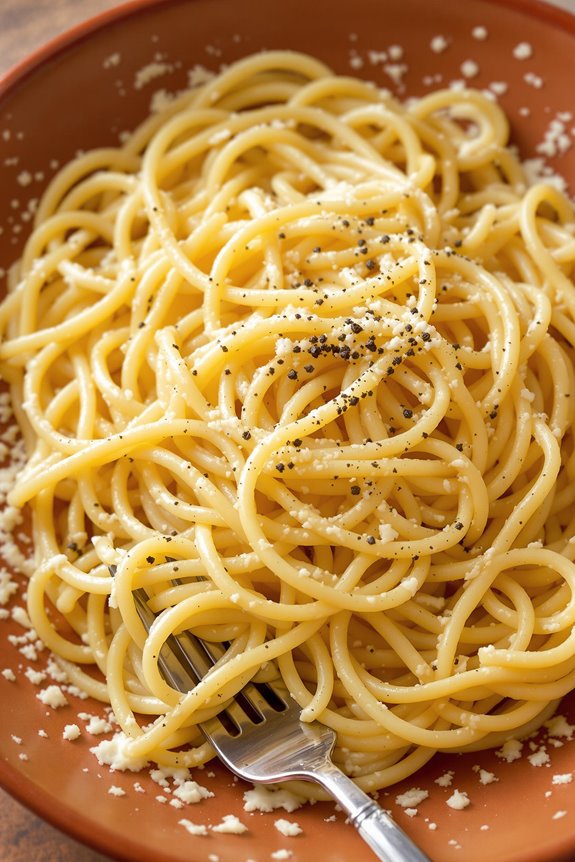
Start by bringing a large pot of salted water to a rolling boil—the foundation of any good pasta dish. Add 12 ounces of spaghetti to the bubbling water and cook until it’s perfectly al dente, which typically takes about 8 to 10 minutes.
While the pasta works its magic in the pot, prepare the simple but luxurious sauce by mashing 4 tablespoons of room-temperature unsalted butter with 1 tablespoon of extra-virgin olive oil and 2/3 cup of grated pecorino romano cheese in a large bowl. This creates a rich, creamy paste that will coat every strand of pasta.
The real magic happens when the worlds collide. Once your spaghetti is tender but still has that essential bite, drain it while being sure to reserve about ½ cup of the starchy pasta water—this liquid gold helps create the silky sauce.
Add the hot pasta directly to your butter-cheese mixture and toss vigorously to coat every noodle. Here’s where you’ll gradually add splashes of the reserved pasta water as needed, creating that signature creamy texture that clings beautifully to the pasta.
For an authentic touch, consider serving this classic dish in a premium Mexican cookware set that beautifully showcases its rustic elegance.
Season with salt and—as the name “cacio e pepe” (cheese and pepper) suggests—a very generous amount of freshly ground black pepper. The pepper should be visible throughout the dish, providing both heat and visual contrast against the pale, creamy sauce.
Divide between plates and serve immediately while it’s still hot and the sauce is at its creamiest consistency.
Rustic Roman Cacio e Pepe Substitutions and Variations
While mastering the classic version gives you a timeless dish to enjoy, this humble Roman pasta welcomes thoughtful adaptations to suit your pantry and preferences. If pecorino isn’t available, Parmesan makes a worthy substitute, though with a slightly milder tang. You can swap spaghetti for bucatini—those hollow strands trap even more peppery sauce—or try tonnarelli for a more authentic approach.
For a heartier variation, I’d suggest adding a handful of crispy pancetta or guanciale. And though purists might raise an eyebrow, a touch of lemon zest brightens the richness beautifully. The key remains that perfect balance of cheese, pepper, and starchy pasta water.
What to Serve with Rustic Roman Cacio e Pepe
Simplicity in Italian cooking often demands thoughtful accompaniments, and cacio e pepe is no exception.
I always recommend a crisp, peppery arugula salad dressed with just lemon juice and olive oil—the brightness cuts through the cheese’s richness perfectly. A side of roasted cherry tomatoes, blistered at 425°F for 15 minutes with a sprinkle of sea salt, adds welcome acidity.
For wine, I’d pair this with a dry, mineral-forward Pecorino from central Italy (yes, same name as the cheese!).
The wine’s citrus notes and slight almond finish complement without overwhelming the pasta’s delicate pepper-cheese balance.
Final Thoughts
After mastering this rustic cacio e pepe, you’ll understand why Romans have treasured this dish for centuries—it’s the epitome of “less is more” in Italian cuisine.
There’s something magical about transforming just a handful of ingredients—butter, cheese, pepper, and pasta—into something so profoundly satisfying.
I’m convinced the secret lies in those final moments, when the hot pasta meets the cheese mixture, creating that glossy, pepper-flecked sauce that clings to every strand.
Don’t rush this moment! The patience required might test you, but when you twirl that first perfect forkful, you’ll know it was worth it.

